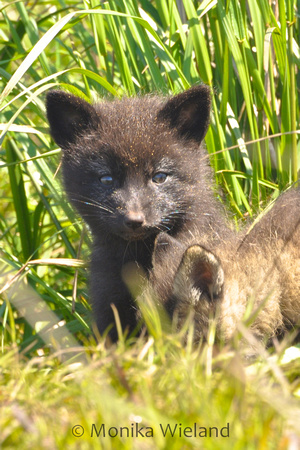While the last few days of chilly rain felt more like fall or winter, today's wildlife sightings confirmed that we are indeed in the middle of spring. I heard there have been some good shorebird sightings at False Bay over the last couple of days so I went to check it out. The first ones I found were a flock of about 100 dunlin amid the glaucous-winged and mew gulls. A bald eagle flew over and when they flushed I realized there were even more dunlin than I thought - about 100 or so:
In with the roughly 40 green-winged teal were four short-billed dowitchers (154), a nice find. There were also about a half dozen greater yellowlegs:
The greatest find was a single marbled godwit (155), a rare species for San Juan County. Unfortunately it was too far away for photos and flew even further away after the eagle came through, but I'm sure glad I found it!
Next up I went to Fourth of July Beach where the most interesting bird was not a sea or shorebird but the oft-overlooked American robin. There were many of them feeding in the grass, and this individual in particularly caught my eye. It would catch a worm, hold it in its beak, move along, set the worm down, catch another worm, then pick up the first worm. Gathering food to take back to a hungry nestling? Here's a photo from when it had three wriggling worms in its beak at once:
Next I stopped at South Beach, where I was distracted from birds altogether by the flowers blooming in the dunes. It looked like the hills were blushing under the force of the pink common storks-bill. The colors were impressive, especially when countered by this black fox:
Then on my way home I was elated to find a real treasure of the spring: a fox den with four playful kits. My all-time most popular blog post that continues to get the most hits is this one, featuring photos of the baby foxes I found in late April 2009. Today they were spending more time underground than in my 2009 encounter, but when they did emerge the light was even nicer than last time since the sun was shining. Here's the most distinct of the four, with an injured left ear:

The two reddish kits mostly just peeked up over a grassy mound at me:
These are my three favorite photos of the day. These little guys are just too darn adorable:
 |
| Prints of this photo available here |
 |
| Prints of this photo available here |
 |
| Prints of this photo available here |














































